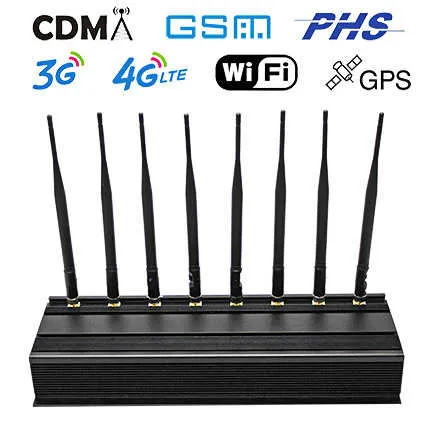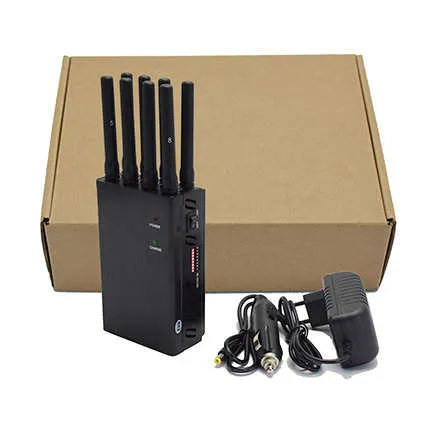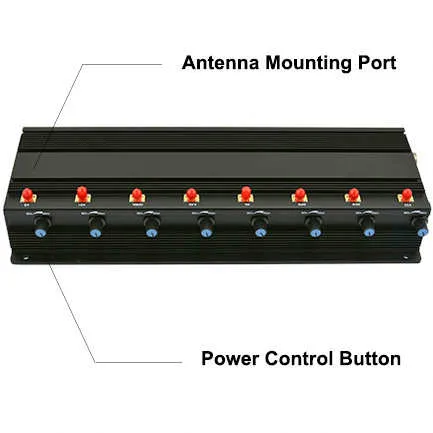-
[PR]
×
[PR]上記の広告は3ヶ月以上新規記事投稿のないブログに表示されています。新しい記事を書く事で広告が消えます。
-
A science teacher has been suspended for using mobile phone jammer in class
Are cell phone jammers legal in schools?
Are cell phone jammer legal in schools? Whether public and private schools are allowed to use them. Also, if you're worried about using jammers at school, don't worry. You can't use a jammer in school unless it's part of the school's wireless network.
Cell phone jammers are legal in public schools
- Although there have been isolated cases of cell phone seizures in public schools, a high school science teacher has been suspended without pay for using a cell phone jammer in class. Cell phone jammers work by blocking a specific radio frequency to block all cell phone communication. It creates radio silence bubbles and is illegal. It's not clear if cell phone blockers are legal in public schools, but it's certainly illegal to sell or use them in public schools.
- Teachers are increasingly using cell phone blockers in class because they're tired of students texting and talking in class. Teachers want to know how to prevent students from texting and not listening in class. In addition to distracting teachers, cell phones can also reduce students' ability to recall material. Cell phone jammers work by silencing signals from mobile devices. Easy to install at the touch of a button.
- While most students use mobile phones in class, some teachers are reluctant to let students use their phones for social purposes. If students are texting or sending threatening messages, teachers do not allow them to text in class. If a student violates this rule, the higher authorities will intervene. These authorities may include the police. Depending on the severity of the violation, students may face legal consequences or be expelled.

They're illegal in private schools
In British Columbia, a high school principal bought a cell phone blocker from an online dealer. The aim is to prohibit students from using mobile phones during school hours. Although such devices violate federal law, there have been isolated incidents of such devices being used to damage learning environments. The principal may be tired of students abusing mobile phones on campus. In addition to being fed up with students abusing their phones, he may have been motivated by incidents of damage to the learning environment.
The technology on the back of the signal jammers blocks all signals within a certain range by sending out a high-frequency signal. Signals blocked by these devices include Bluetooth devices and wireless networks. In addition, if a student is using a laptop in class, it needs to be connected to the school's wireless network. Using cell phone jammers can interfere with these devices and make them unable to answer emergency calls.
Cell phone blockers are an effective way to eliminate classroom distractions. Portable jammers can be hidden in a teacher's desk drawer or cabinet and can block all calls and texts during class. Using mobile phones in the classroom is a serious distraction, and teachers should take responsibility for preventing students from being distracted. Instead of allowing distractions to interfere with learning, teachers should use technology to keep phones out of the classroom.
Disabling a cell phone jammer is a crime
Canadian law prohibits the use of cell phone jamming devices. While cell phone jammers are illegal, they are not always illegal. Some devices are battery operated. Some look like cell phones with dead batteries. Others are more powerful, requiring power from a standard outlet or even connecting to the vehicle's electrical system. Many of these devices were used in terrorist attacks around the world, including the bombings in Indonesia in August 2002 and in Bali in October 2002. In December 2003, the terrorist attack on Pakistani President Pervez Musharraf was carried out via cell phone.
Using cell phone jammers is illegal in the United States, but not in Canada. Cell phone jammers are being sold on a handful of websites. James Mislan, a former communications electronic warfare officer, said they are an issue that affects personal safety and public safety. While they are illegal in most developed countries, they are not illegal in Canada. Therefore, you should not use them to keep yourself and others safe.
In the UK, police are considering using mobile phone jammers to protect their fleets. In other countries, hotels and other businesses allegedly use them to block cell phone use during hotel stays.
Legitimacy
- While it's not illegal to use cell phone jammers in the workplace, it's best to check with your employer about the consequences. If you are caught using the FCC in the workplace, there are several ways to get in trouble with the FCC. Some companies use illegal devices such as signal blockers and text blockers, and the FCC has fined them for violating the law. The companies cannot sell the devices in the United States, but they can be purchased online.
- Cell phones are increasingly used in public places, and this is where cell phone blockers can be very useful. They block signals from nearby mobile devices, rendering them useless. Although the technology is not new, overseas exporters of jammers say demand is on the rise and they are bringing hundreds of cheap gps jammer into the United States each month. Some of the companies buying jammers are hair salon owners, cafe owners and hoteliers. Even bus drivers are buying them.
- As the threat landscape evolves, effective security measures must be put in place to stay one step ahead. Peace of mind and enhanced security for individuals, businesses and communities. By interrupting signals at 315MHz, 433MHz, and 868MHz frequencies, these devices are an important tool against potential threats posed by remotely controlled devices.
- In a world where technology is both a blessing and a curse, it's reassuring to know that innovative solutions like remote wifi blocker exist. With expertise and cutting-edge products, we can enhance security, protect our assets and reduce the risks associated with remotely controlled threats.
PR -
Father Day buying signal jammers
Can you purchase a signal blocker for personal use?
-
If you want to block your cell phone signal, you've probably heard of cell phone signal blockers, but you might be wondering: Can you buy a signal jammer for personal use? Well, there are many reasons why you might want to buy a signal jammers, and here are some of them. It is perfectly legal to use signal jamming devices for personal use, and there are many legitimate applications. Also, you can use it in prison. This way, the jammer will only interfere with signals inside the prison and will not affect commercial signals.
-
You can only purchase a signal blocker for personal use if your intended use is legal. The technique is banned in France. In fact, a French father was convicted of personally using a signal jammer to keep his children away from social networking sites. After his children were confined to their rooms due to the Covid-19 epidemic, they became addicted to social networking sites. If you want peace on the train, you may want to discuss the risks.
-
The legality of cell phone blockers is a hotly debated topic. There are a lot of legal gray areas when it comes to this technology, but one thing is certain: you may want to use a technology for many different reasons. If you want to protect yourself from prank callers, signal blockers can block unwanted calls and unwanted text messages. In addition, they can be used as listening devices for personal use.
-
The first reason to buy a signal blocker is that you don't understand its legal implications. You may have experienced interference from other devices that made you feel scared. Therefore, you must use the signal blocker responsibly and ensure that it does not cause any harm to you or others. This is why you should always check the security seal of a device before buying it. There are several legal issues involved, but you must use signal blockers in a responsible manner.
Father's Day Sale Buy jammers now https://www.perfectjammer.com/ 10% off sitewide, free shipping until June 31, 2023, save up to 20% with promo code.

How do I know if the signal is being interfered with
The process of interference is simple. The source object does not have to send redundant signal PDUs over the network. This uses up valuable bandwidth. Jamming effects are generated by receiving radio objects. And because the radio object is the only one responsible for jamming effects, the source object does not have to send redundant signals over the network. What a waste. This also prevents the signal from reaching its destination.
Another method of detecting interference signals involves using a primary receiver and multiple sub-receivers to generate a composite signal. This process samples the input signal and compares it with the wideband threshold THWB, the narrowband threshold THNB, or the signal received at the narrowband threshold THNB. Once these signals are related to each other, a composite signal is created. This process is effective for minimizing the signal at the primary receiver.
A method for jamming a radio signal includes steps to optimize interference for P predefined regions and locations in a communication network. These methods also take into account the parameters of friendly transmission and receiving platforms to minimize internecine effects on receivers. The anti-jamming system combines signals from multiple sources and produces a narrow beam in the direction of the cell phone jammer.
If an enemy uses jamming techniques, the best defense is to use a different type of antenna. Antennas can interfere with each other, and an enemy station may interfere with signals sent by another station. In this case, it is necessary to change the polarization of all stations and use different antennas. It is also a good idea to use alternative communication routes such as radio relays, as they can be used as relays between radio stations.
Where is the signal jammer in Fortnite?
You're probably wondering where the signal jammers are in Fortnite. The signal Jammer mission can be found on a small island in the Far East map. It starts with a new NPC and you need to play a match to destroy all the signal jammers. If you die before you destroy all of this, your progress will reset. This task requires you to get close to the signal jammer.
The signal jammer is located on the northern part of the island, near Shifty Shafts. Follow the trails that wind around the ridge. You need to press the square button to collect it. After collecting the signal jammer, you can use it to open nearby boxes. This will give you 25K XP. If you have not yet unlocked this challenge, be sure to purchase a Battle Pass to unlock the new character.
You can find the signal jammer by climbing the hill. You'll find them near portaloo and a little south of Command Cave. You can collect signal GPS jammers in multiple games. Another way to collect them is to quit the game and return later. If you haven't already collected them, you should consider getting a Fortnite Battle Pass so you can access more levels. If you're not sure where to find a signal jammer, you can find a map guide on Fortnite's official website.
What is the Signal Jammer in GTA Online mode?
-
These are hidden items that block player signals, and they can be spread throughout the map. They are usually small and flash red when nearby. They can be hard to spot, but a good gun can fight them. However, you should use weapons with the right range so that you can hit them with your vehicle.
-
You'll find signal gsm jammer scattered all over the map, but they're easy to get in invitation-only sessions. You'll find them in Los Santo, Sandy Coast and Paletto Bay. These devices beep when they approach you, but you can destroy them from the ground using snipers. You can also fly into Sancudo Fort to find the signal jammer, but be careful, you will get a higher wanted level, and the police will attack with rockets.
-
The Signal Jammer is a collectible in GTA Online mode. You can destroy them to earn valuable assets and cash. They can also help you with casino robberies. You can also track your progress by collecting them. But it's not easy to destroy them, especially if you're a beginner.
-
-
Father Day Sale Buy Signal Jammers now
Signaljammer - How can you keep your family and friends safe
A signal jammer is a device designed to interrupt communication between devices. They work by mimicking the same frequency range as the target device, disrupting their signal.
The technology has many uses, including in electronic warfare. The Russian military has reportedly been using signal jammers to jam drones flying over Syria. Some of the drones were forced to crash or veer off course. Russia has also been accused of using powerful signal jammers along its eastern border, disrupting phone systems and jamming GPS signals for aircraft flying in the region. In addition to military use, signal jammers are popular with Mexican drug cartels.
Signal jammers are banned in many areas due to the dangers associated with cell phones. They are useful for blocking unwanted calls, ensuring privacy and preventing distractions. Be sure to check your local laws before using any signal jammer device. It may also be illegal to sell or market signal jammers in your country. Before purchasing a signal jammer device, you must seek legal permission. However, the device should be used as directed to avoid any possible invasion of your privacy.
Handheld signal blockers are portable and used to block cell phone signals. However, they require batteries and can only cover a small area. Desktop jammers are larger and can interfere with specific signal frequencies. However, if you plan to limit cell phone service, a handheld jammer may be the right choice for you. It can also be used to restrict Internet access and prevent unwanted phone calls. It is not legal to use a signal blocker in the United States, but it is an effective solution.
What you need to know before buying a signal jammer device
-
If you are going to buy a signal jammer device, you should first know what you need it for. These devices work by blocking all cellular signals. You can install one on your phone or buy a portable one. Depending on the model, you can jam up to six bands at a time. The best signal jammers are usually portable. They can also be used in cars. No matter where they are placed, they will help you avoid being tracked by spies and hackers.
-
However, you should be aware of the potential legal implications of using such devices. They are not easy to use and they are expensive. If you get caught, you will most likely face a hefty fine and possible jail time. However, unlike cell phones, these devices do not affect your Internet connection or landline. If you are concerned about losing service, it is recommended to consult your wireless provider and device manufacturer.
-
Signal jamming is often compared to a denial-of-service attack, in which large volumes of traffic overload a server. By broadcasting noise on specific radio frequencies, signal jammers block the use of those frequencies. Instead of cutting off reception to nearby devices, it disrupts the ability to send and receive calls. It's not a dangerous situation, but it's very inconvenient.
Father's Day Sale Buy jammers now https://www.perfectjammer.com/ 10% off sitewide, free shipping until June 31, 2023, save up to 20% with promo code.


Choose the best signal jammer
When looking for the best signal jammer, you need to consider what features your device needs to have. It is best to choose a device that can control the signal of 2, 3 or 4 GHz devices. The most versatile and effective jammers are portable and flexible, so they can control signals from 2G, 3G, and 4G modes. If you are looking for something suitable for vacation or work, you can purchase a signal jammer that meets your needs and is easy to carry.
Signal strength is an important consideration as it affects interference range, overall performance and durability. High-end GPS jammers have multiple jamming channels, and they are usually more expensive than cheaper single-channel blockers. The cheapest models, on the other hand, can only interfere with specific signals and cannot cover large areas. You'll also want to look for a product with a high-quality cooling fan so it doesn't overheat.
Another place where signal blockers are used is in movie theaters. Often, people use their phones to disturb others, and some people livestream the entire movie on social media. This can have a negative impact on cinema revenue, so having a handheld signal blocker ensures that you won't be disturbed while watching a movie. It's a simple solution to a problem that affects so many people every day. Moreover, signal blockers are an essential part of modern life.
Whether you're looking for a jammer for your phone or other wireless device, the best way to block signals is to buy a product that blocks them all at once. Whether you're looking for a cell phone signal blocker to keep people in their lane while driving, or want to block out noisy offices, there's a jammer for you. So, how to choose the best signal blocker?
There are portable signal blockers and desktop signal blockers. Portable jammers are convenient and easy to hide. They work for a short time and usually cover a small area. Desktop jammers work over a larger area and interfere with specific signals. If you're looking for a long-term solution, the size of a cell phone jammer can be an issue. Choosing the best signal jammer depends on your specific needs and budget.
Before buying a signal blocker, be sure to know which frequencies it can block. Different cellular systems process signals differently, so you need to choose a device that can broadcast at the right frequency. For example, GSM uses the 900 MHz band in Europe, while CDMA and TDMA use the 1800 MHz band in Asia and the United States. But even analog phones can be jammed with signal jammers.
-
-
FCC notes increase in imports of signal jammers into U.S.
If you've ever wondered if owning a signal jammers is illegal, you're not alone. Many people use them to block phone calls and text messages, Wi-Fi networks, GPS systems, and more. These devices not only disrupt the functionality of modern communication systems, but also pose a threat to public safety. The Federal Communications Commission has been noting an increase in jammers imported into the country. However, there are still a few things you need to know before buying a signal blocker.
Cell phone jammers are illegal in the United States, although they can still be found on some websites. According to Mislan, a former communications electronic warfare officer in the U.S. Army, cell phone jammers pose a special threat to law enforcement because they affect the safety of innocent people. As such, he said it is illegal to possess and sell them because the technology causes harm to law enforcement and the public.

Another danger of signal jammers is that they can be dangerous. In the United States and the United Kingdom, car thieves have been known to use them to avoid paying tolls by tricking GPS receivers. However, some pranksters have been found to use these devices to trick iPhone users and get away with crimes. Therefore, it is important to understand the legal implications of having a signal jammer.
Despite the legal risks of owning and operating signal jammers, some countries allow it. India, for example, allows people to use GPS jammers in mosques and schools, as long as they do not extend beyond the walls of buildings. Jammers were also briefly approved for use in concert venues. However, these devices are still illegal in many parts of the world. The law is complex and there is no clear legal advice on the use of jammers.
How does a signal jammer work?
Signal jammers operate by interfering with wireless signals and can disrupt signals from nearby receivers. They interfere with cellular, WiFi, Bluetooth, and GPS signals. The range of signal jammers varies widely, from small handheld jammers that block signals to large military-grade jammers that can block signals for hundreds of miles over open terrain. If you are concerned about the safety of your family, consider purchasing a signal blocker.
While there is no one correct way to use a signal jammer, it is important to understand that different types of signal jammers are used to block different types of communication. Some jammers block only one frequency, while others can jam multiple frequencies at the same time. To block multiple frequencies, use scan jamming or barrage jamming. The latter method is more costly and has a larger interference radius than the former. Unlike scanning jammers, fixed signal jammers require a 230 V power supply and typically operate at a distance of up to 100 meters.
How do I test my phone jammer
Cell phone jammers can be an effective tool in a variety of situations. These devices are designed to cut off the cell phone signal and prevent the phone from contacting the person you are calling. Some examples include a museum that might want to prevent visitors from using mobile phones. Mobile phones reduce museum attendance, so it makes sense for museums to discourage their use. Similarly, movie theaters may want to prevent customers from texting during a movie.
Cell phone jammers come in a variety of sizes and styles. The smaller version blocks cell phone signals between 800 and 1900 MHz. They're blocking the signal within a 30-foot radius. Larger devices, on the other hand, block signals from both networks at the same time. Both types of jammers have their own advantages. Some are smaller and more convenient than personal phones. The smallest model can block cellular signals within a 30-foot radius.
To test the device, you need a digital oscilloscope with a bandwidth of 30MHz. You will also need a power supply to provide a regulated power supply during the test. The device also requires a multimeter to measure resistance, capacitance and current on the circuit board. Since the RF amplifier blocks the direct current, it completely blocks the cell phone signal, allowing only the AC electrical signal to pass through. However, it is important to remember that there are three subcircuits in the cell phone jammer circuit.
The main function of a cell phone signal blocker is to block or limit cellular activity. It can prevent illegal activities and unnecessary phone calls between prisoners. Educational institutions use signal jammers to block cellular signals on campus. In addition to preventing prank calls and other criminal activity, jammers can protect a place's sovereignty and make prison guards or security guards look like modern heroes.
How to use signal jammer
-
One way to protect yourself from pranksters and pranksters is to buy signal jammers. The device works by interfering with mobile signals from nearby phones. However, the device is very expensive and bulky and cannot be carried around in a pocket or purse. However, the smallest jammers are lightweight and small enough to fit in a backpack or pocket. You can also find jammers that block multiple frequency bands.
-
There are many different types of signal jammers. While some may block phone calls, others may disrupt other signals. Jammers have many different uses, blocking calls to ensure privacy, blocking interference, and even blocking unwanted calls. Before buying a jammer, be sure to check your local laws regarding cell phone use. It is illegal to use signal blockers in public places. However, in some cases you can legally use it.
-
To use a signal jammer, you must first determine the desired output power. Omnidirectional and directional jammers are available. Omnidirectional jammers give you 360 degree field of view suppression, while directional jammers only block 180 degree field of view. It is recommended to select jammers according to the range and specifications of jammers. However, keep in mind that each jammer has its own drawbacks.
-
-
The principal installed mobile phone jammer but forgot to check if it was legal
Many educators do not know how to use electronic devices in the classroom. Some people have been educating students about negative impacts and encouraging them to regulate their use. Others even emphasized the potential applications of mobile devices in the classroom. Although many people just try to ban everything. A principal in British Columbia raised his school's ban to a new level by setting up a cell phone jammer There is only one issue - the device is illegal in Canada. The principal had already ordered Chinese equipment online, but some angry students quickly discovered and told him that he had violated the law. So many ideas. Now, he looks terrible, and using a mobile phone in school now seems to be a civil rights issue for some students.
This seems to have nothing to do with the ban on mobile phones, more to maintain the authority of the school. In this regard... this is completely counterproductive. Many schools have effective mobile phone bans without resorting to technical barriers (I attended such a high school). Perhaps the principal should explain to students and teachers why mobile phones are a problem, develop reasonable usage guidelines, and address the reasonable consequences of violating policies. Compared to installing illegal equipment and being forced to return the same way, this may establish the authority of the principal and win the respect of students.

I just took a deep breath, someone. This may have violated American laws or regulations.
I know that the United States has the strictest laws on interfering with phone operations, so we also have strict regulations on the same topic. But should we?
The problem of interfering with signals stems from the methods used to interfere with the signals. You basically just send a stronger signal at the same frequency as the signal you want to interfere with. This violates the FCC's rules for dividing the spectrum. This is the same reason why pirated radio stations are illegal, despite the fact that many pirated radio stations provide much better signal quality than commercial radio stations.
Why does the owner have no right to prohibit the use of mobile phones on his property.
Electromagnetic spectrum is public property, not private property. The government only reserves some frequencies for public use and permits other frequencies. Breaking this system will ultimately cause electromagnetic damage, making it impossible for wireless signals to work reliably. Do you enjoy having phone features? If that's the case, you like the FCC's regulations on this matter because if their regulations on electromagnetic spectrum are not so strict, your phone may not be able to be used anywhere.
If you don't like it, don't go to concerts, churches, restaurants, funerals, or any other places. Why do we all have to listen to the honking of our phones and the shouting of fools during concerts, funerals, and moving theaters.
The problem is that music halls, churches, restaurants, etc.... Cannot interfere without disturbing nearby people. This is just a matter of interfering with how it works. What these companies can do is build buildings in a way that reduces signal reception. This is completely legal. They just don't allow very powerful signals to be broadcasted on frequencies reserved for public use - that's how 'signal jammers' work.

The Benefits of School Phone Jammer
- Modern education may be one of the most important things that humans ultimately invent, taking into account everything.
- It creates a system in which children can be shaped into highly responsible and capable adults.
- However, many problems often arise within schools. Our modernity and era have brought many astonishing improvements to the way of life of ordinary people.
- Especially with the popularization of smartphones, people have become closer to each other and have gained more information.
The only problem is that some parents who are quite irresponsible in raising their children often purchase smartphones for their children and let them use these devices as they please. Now, generally speaking, there is nothing wrong with children using their phones. Problems only arise when they use them in school. Schools should really start investing in telephone GPS jammers so that children cannot use these devices to distract themselves. When they are in school, their attention should be focused on learning rather than on mobile devices.
If children's phones cannot receive any signal, they have no reason to look at their phones. This can also help them break the bad habit of using smartphones. Smartphone addiction is a very real thing. It is particularly common among children in our world. Give them a few hours during which they will be forced to leave their equipment and rest, which will only benefit them. Even if they don't study during this period, they can at least focus on things outside of social media.
